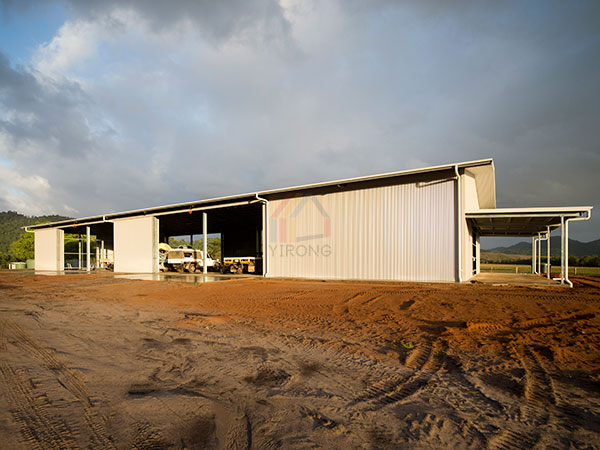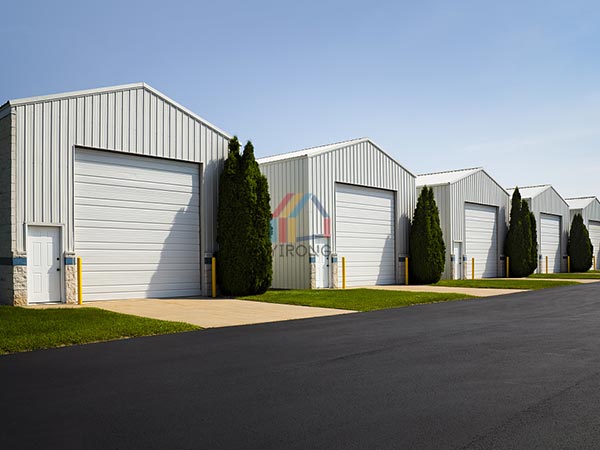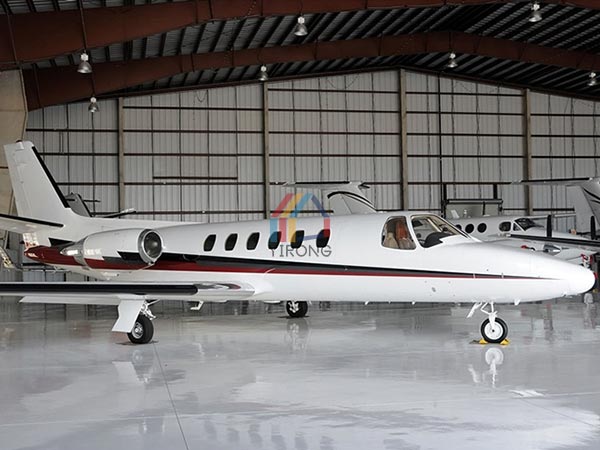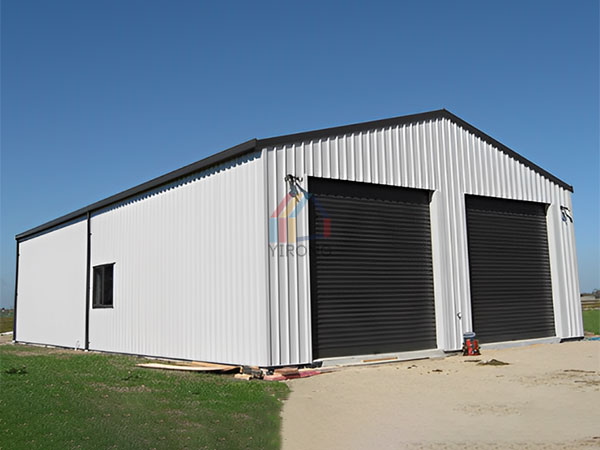Description
Prefab aircraft hangars are pre-engineered structures designed for the storage, maintenance, and repair of aircraft. These hangars offer a wide range of benefits, including cost efficiency, quick assembly, and customization options.
The structure of prefab aircraft hangar usually uses high-strength, lightweight materials such as steel, aluminum alloys, etc. to ensure the stability and durability of the structure. Its design often adopts modular or prefabricated components for quick assembly on site. In addition, the structure of the hangar also needs to consider the size, weight, and maintenance needs of the aircraft to ensure that it can meet the parking and maintenance requirements of various aircraft models.

Application of Prefab Aircraft Hangar
Prefabricated aircraft hangars are widely used in the aviation industry, including civil aviation and military aviation. In civil aviation, hangars can be used to store and protect commercial and private aircraft, while providing maintenance and upkeep services. In military aviation, prefab aircraft hangar is used to store and protect military aircraft, helicopters, etc., ensuring their safety in adverse weather and war environments.
| Specification | ||
| Main Steel Frame | Column & Beam | Q235,Q345 Welded H Section Steel |
| Secondary Frame | Purlin | Q235 C&Z purlin |
| Knee brace | Q235 Angle Steel | |
| Tie Rod | Q235 Circular Steel Pipe | |
| Brace | Q235 Round Bar | |
| Vertical & Horizontal Support | Q235 Angle Steel, Round Bar or Steel Pipe | |
| Maintenance system | Roof Panel | EPS/Glass Fiber/Rockwool/PU Sandwich Panel or Steel Sheet |
| Wall Panel | Sandwich Panel /Corrugated Steel Sheet | |
| Accessories | Window | Aluminum Alloy/PVC/Sandwich Panel |
| Door | Sliding Sandwich Panel door/ Rolling Metal door | |
| Rainspout | PVC | |
| Live load on roof | 50kg/Sqm(According to your request) | |
| Wind Resistance Grade | 12 Grades | |
| Earthquake-resistance | 8 Grades | |
| Structure Usage | UP to 50 years | |
| Temperature | Suitable temperature:-50ºC~+50ºC | |
| Options | Vast array of colors and textures available | |
| Paint Options | Alkyd painting, two primary painting, one finish painting(gray, red, blue, epoxy zinc etc) or Galvanized | |
Characteristic of Prefab Aircraft Hangar
- Modular Design: Prefabricated hangars are built using modular components, which allows for versatile designs and sizes tailored to specific needs.
- Durable Materials: Typically constructed from steel or metal, these hangars are designed to withstand harsh weather conditions and provide long-lasting protection for aircraft.
- Insulated Options: Many prefab aircraft hangar come with insulation options to maintain a stable internal environment, essential for sensitive aircraft equipment.
- Large Door Openings: Designed for easy access, these hangars often feature large overhead doors that accommodate various aircraft sizes, from small planes to large jets.
- Flexible Layouts: The internal layout can be customized to include office space, workshops, or storage areas, depending on the operational needs.

Advantages of Prefabricated Hangars
- Cost-Effectiveness: Prefab hangars typically require lower upfront costs compared to traditional construction methods, making them an attractive option for businesses.
- Faster Construction: The prefabrication process allows for quicker assembly on-site, reducing downtime and enabling faster operations.
- Reduced Labor Costs: With fewer construction complexities, labor requirements are often lower, contributing to overall cost savings.
- Scalability: If future expansion is needed, Prefabricated hangars can be easily modified or added to, providing flexibility for growing businesses.
- Energy Efficiency: Many prefab designs incorporate energy-efficient features, helping to reduce operational costs over time.

Considerations
- Local Regulations: Before construction, it’s crucial to check local zoning laws and aviation regulations to ensure compliance.
- Site Preparation: Adequate site preparation is essential for the stability and longevity of the hangar. This may include leveling the ground and ensuring proper drainage.
- Design Specifications: Careful consideration should be given to the design specifications based on the types of aircraft to be housed, including height, width, and load-bearing requirements.
- Maintenance: Regular maintenance is necessary to ensure the longevity of the prefab aircraft hangar and to protect the aircraft stored within.
- Customization Costs: While prefab structures are generally cost-effective, extensive customization may increase the overall price.











